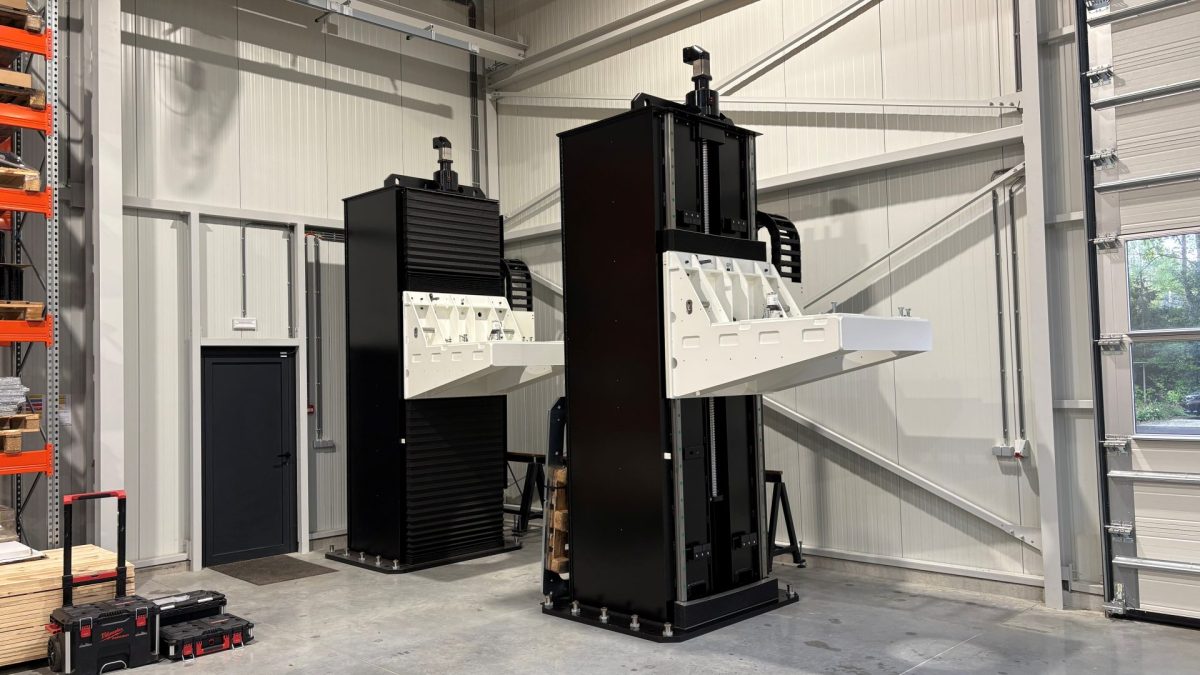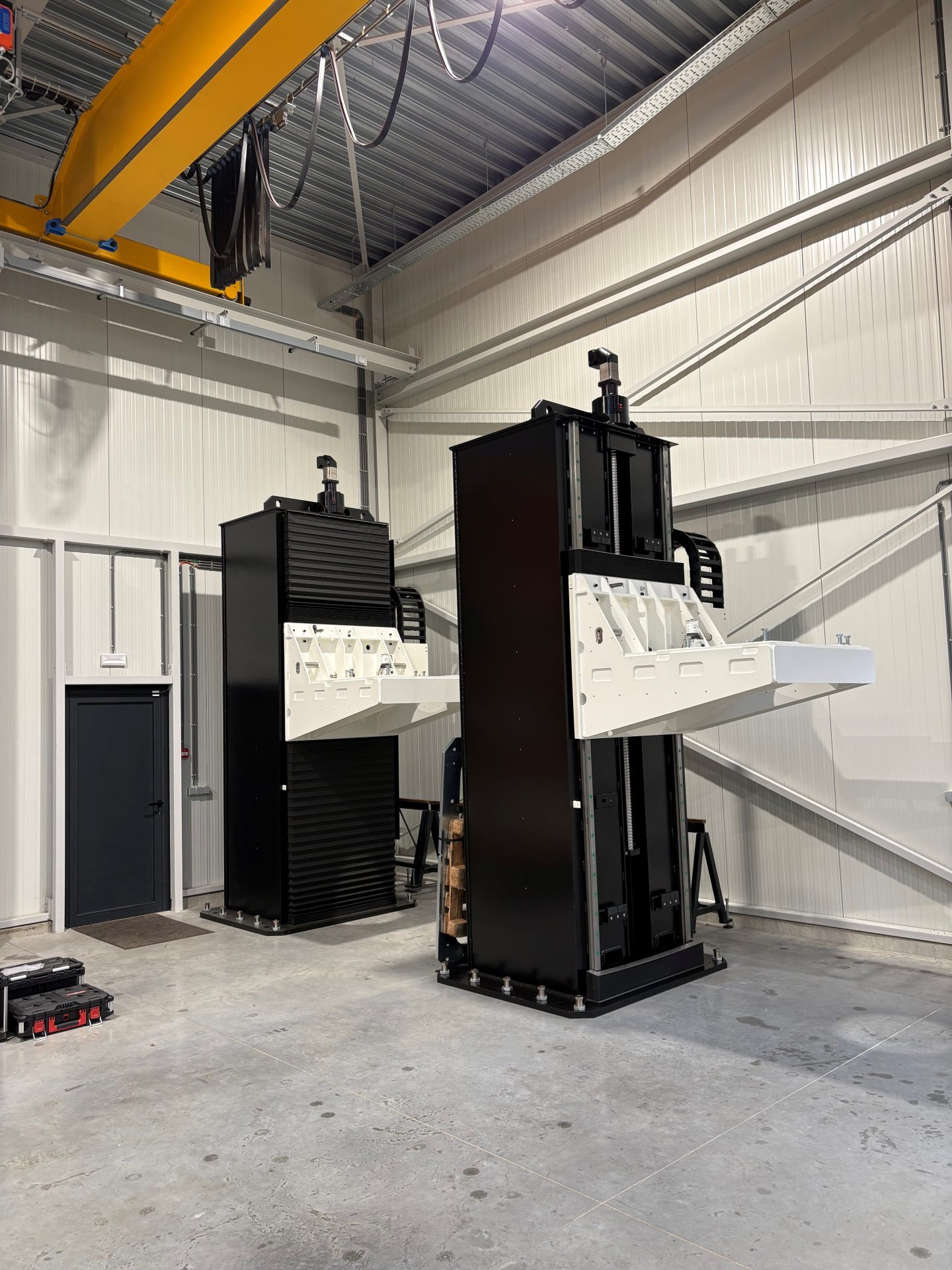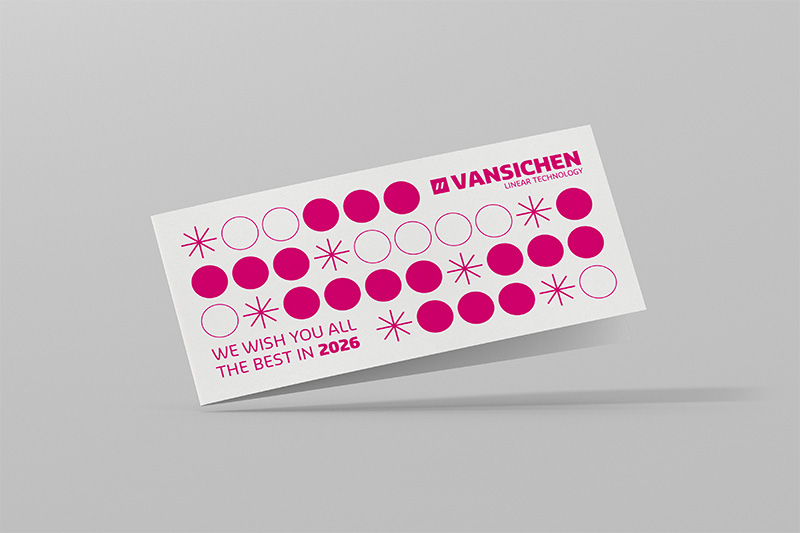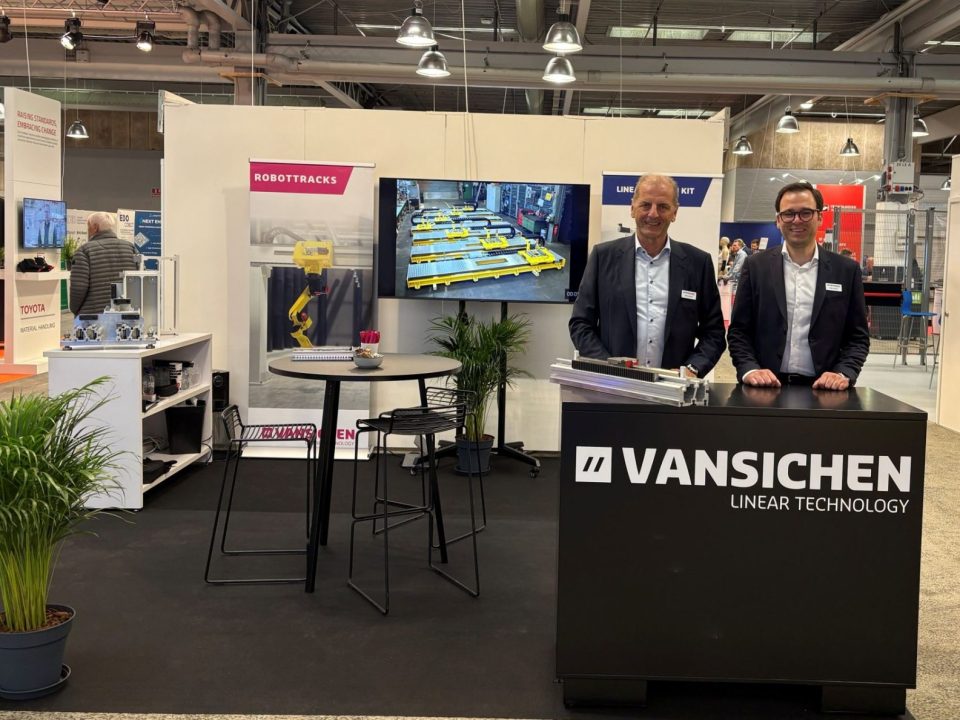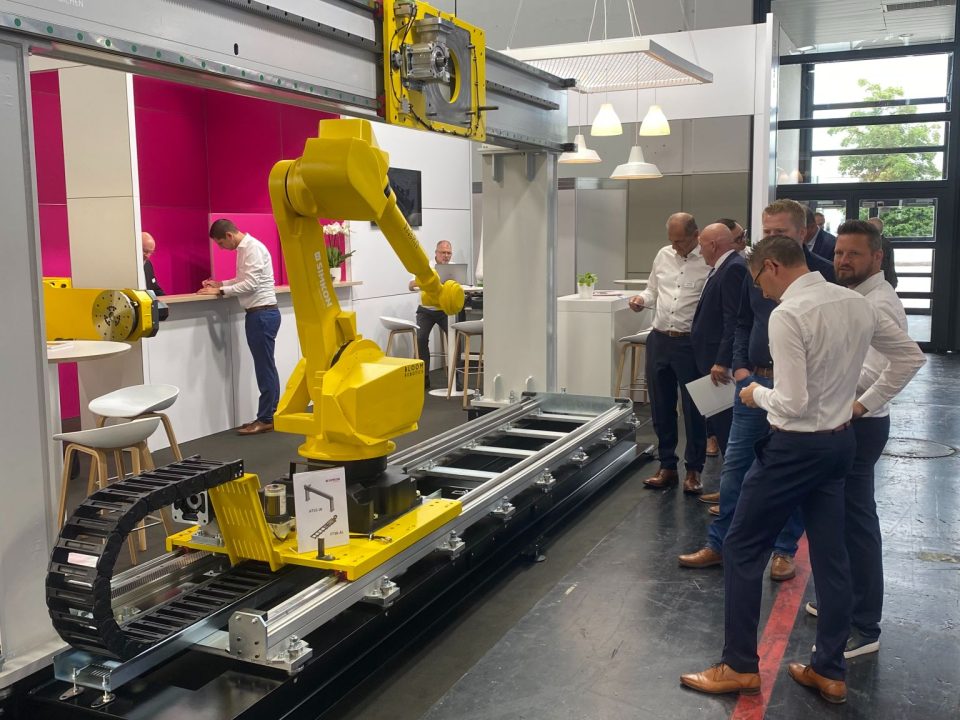To give robots a longer range, they are often placed on tracks. Hasselt-based Vansichen Linear Technology has now developed ‘vertical tracks’ for an application using robots to 3D-print compact houses. These are lifting masts with a stroke length of 2.3 m.
- Home
- Products
- Downloadcenter
- Realisations
- News
- Meeting rooms
- Contact
- About us
- Magazines
- Home
- Products
- Downloadcenter
- Realisations
- News
- Meeting rooms
- Contact
- About us
- Magazines
- Home
- Products
- Downloadcenter
- Realisations
- News
- Meeting rooms
- Contact
- About us
- Magazines

Vansichen showcases advanced automation solutions at Automatica 2025
June 20, 2025
Vansichen Linear Technology at the HI Tech & Industry Scandinavia trade fair
October 6, 2025Limburg-based family company Vansichen Linear Technology is a well-known name when it comes to tracks and portals used to move robots horizontally, but a vertical axis is something else.
The lifting masts in the picture each have a platform on the side to which a Comau NU290-3.0 robot will be attached. The application was developed and built on behalf of the Dutch company CEAD, which specialises in large-format 3D printing technology. The end customer is a company in the US that wants to use the robots to 3D-print so-called tiny houses. In 3D printing of large objects, robots are often used in which the extruder used in printing sits on the robot as a tool. At CEAD, this is integrated into their Flexbot machine. By placing the robot on a lifting mast, its reach in height can be increased by 2.3 m in this case.
Finite element method
“Each mast gets its own robot,” explains Pieter Vansichen of Vansichen Linear Engineering. “Those robots weigh 2.2 t and need to be moved in height to give them the necessary reach. The positioning here requires an accuracy of 0.2 mm, which is needed to print very precisely.”
Linear movement in the lifting masts is achieved with a ball screw drive controlled by a servo motor. There is also a brake on that motor that can be used to lock the position of the axis once the robot has been raised to the desired height. The major difference with horizontal axes is that the robot exerts a moment on the axis due to its weight. Moreover, that moment constantly varies during the robot’s movements.
“It’s the structure of the lifting mast that catches that moment,” says Pieter Vansichen. “We used the finite element method in the design to verify that the structure provides sufficient stiffness in all of the robot’s positions. That stiffness is needed to achieve the desired positioning accuracy. The servo motor and ball screw drive were also chosen because of the high accuracy required in this application.”
Protection from dust and dirt
The masts have a height of 4 m with a stroke length of 2.3 m. Each mast weighs 4.3 t on its own and the robot’s 2.2 t weight will soon be added. Folding bellows were placed over the moving parts of the masts to protect the mechanism inside from dust, dirt, and other environmental factors so that less maintenance will be required and a long service life can be guaranteed.
Vansichen and CEAD have been working together to develop innovative solutions for 3D printing technology for some time. For example, two horizontal tracks of 43 m each were previously installed in Dubai. The control of linear axes is integrated into the robot controller as with the new lifting masts for the US.
Source: automation magazine


